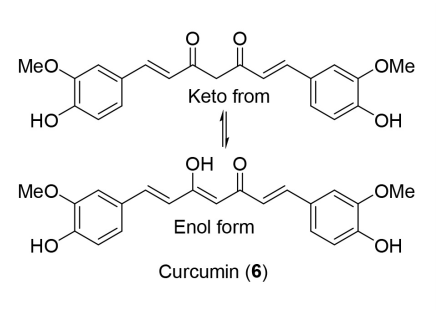Folk Wisdom of Thai Traditional Medicine and Its Use as Products
Keywords:
Thai herbal medicine, Herbal products, Thai folk wisdom, Natural productsAbstract
Thailand has a long history of folk wisdom of traditional medicine, which is used for the treatment of various diseases. This article provides examples of some Thai traditional medicines, which have an important role in disease treatment, for example, the plant Andrographis paniculata for the treatment of COVID-19. Other traditional medicines including Pueraria mirifica, Garcinia hanburyi, Croton sublyratus, Zingiber officinale and Curcuma longa are also mentioned in this article. Structures of the biologically active compounds are also provided for individual herbal medicines. This article points out the importance of Thai folk wisdom derived from our ancestor, and the folk wisdom of Andrographis paniculata has displayed an important role again for the treatment of COVID-19. Therefore, we should appreciate the reputation of Thai folk wisdom. Moreover, this article also mentions the history of research on chemistry of natural products in Thailand.
Downloads
References
Genilloud O. Actinomycetes: still a source of novel antibiotics. Natural Product Reports. 2017;34(10):1203-1232.
Caly L, Druce JD, Catton MG, Jans DA, Wagstaff KM. The FDA-approved drug ivermectin inhibits the replication of SARS-CoV-2 in vitro. Antiviral Research. 2020; 178:104787.
Kashemsanta MCL, Kasin S, Shaw HKA. A new species of Pueraria (Leguminosae) from Thailand, yielding an oestrogenic principle. Kew Bulletin. 1952;7(4):549-552.
Cain JC. Miroestrol: an oestrogen from the plant Pueraria mirifica. Nature. 1960; 188:774-777.
Chansakaow S, Ishikawa T, Seki H, Sekine K, Okada M, Chaichantipyuth C. Identification of deoxymiroestrol as the actual rejuvenating principle of “Kwao Keur”, Pueraria mirifica. The known miroestrol may be an artifact. Journal of Natural Products. 2000;63(2):173-175.
Jones HE, Waynforth HB, Pope GS. The effect of miroestrol on vaginal cornification, pituitary function and pregnancy in the rat. The Journal of Endocrinology. 1961;22: 293-302.
Jones HE, Pope GS. A method for the isolation of miroestrol from Pueraria mirifica. The Journal of Endocrinology. 1961; 22:303-312.
Bounds DG, Pope GS. 739. Light-absorption and chemical properties of mirœstrol, the œstrogenic substance of Pueraria mirifica. J Chem Soc. 1960(0):3696-3705.
Ollis WD, Ramsay MVJ, Sutherland IO, Mongkolsuk S. The constitution of gambogic acid. Tetrahedron. 1965;21(6):1453-1470.
Liu Y, Chen Y, Lin L, Li H. Gambogic acid as a candidate for cancer therapy: a review. Int J Nanomedicine. 2020;15:10385-10399.
Chi Y, Zhan X-k, Yu H, et al. An open-labeled, randomized, multicenter phase IIa study of gambogic acid injection for advanced malignant tumors. Chin Med J (Engl). 2013;126(9):1642-1646.
Kakehashi A, Yoshida M, Tago Y, et al. Pueraria mirifica exerts estrogenic effects in the mammary gland and uterus and promotes mammary carcinogenesis in Donryu rats. Toxins. 2016;8(11):275.
Kanjanasirirat P, Suksatu A, Manopwisedjaroen S, et al. High-content screening of Thai medicinal plants reveals Boesenbergia rotunda extract and its component Panduratin A as anti-SARS-CoV-2 agents. Scientific Reports. 2020;10(1):19963.
Sa-Ngiamsuntorn K, Suksatu A, Pewkliang Y, et al. Anti-SARS-CoV-2 activity of Andrographis paniculata extract and its major component andrographolide in human lung epithelial cells and cytotoxicity evaluation in major organ cell representatives. Journal of Natural Products. 2021;84(4):1261-1270.
Limsiriwong M, Sahamethapat A, Kanjanapruk P. Production of andrographolide reference standard from Andrographis paniculata (Burm.f.) Nees. Journal of Thai Traditional & Alternative Medicine. 2019;17:365-375.
Villedieu-Percheron E, Ferreira V, Campos JF, Destandau E, Pichon C, Berteina-Raboin S. Quantitative determination of andrographolide and related compounds in Andrographis paniculata extracts and biological evaluation of their anti-inflammatory activity. Foods. 2019;8(12):683.
Andrographis paniculata vs Boesenbergia rotunda vs control in asymptomatic COVID-19; https://clinicaltrials.gov/ct2/show/ NCT05019326. 2021. Accessed 29 December, 2021.
Wanaratna K, Leethong P, Inchai N, et al. Efficacy and safety of Andrographis paniculata extract in patients with mild COVID-19: A randomized controlled trial. medRxiv. 2021:2021.2007.2008.21259912.
de Lima RMT, Dos Reis AC, de Menezes APM, et al. Protective and therapeutic potentialofginger(Zingiberofficinale)extract and [6]-gingerol in cancer: A comprehensive review. Phytother Res. 2018;32(10):1885-1907.
Semwal RB, Semwal DK, Combrinck S, Viljoen AM. Gingerols and shogaols: Important nutraceutical principles from ginger. Phytochemistry. 2015;117:554-568.
Giordano A, Tommonaro G. Curcumin and Cancer. Nutrients. 2019;11(10):2376.
Hassanalilou T, Ghavamzadeh S, Khalili L. Curcumin and gastric cancer: a review on mechanisms of action. J Gastrointest Cancer. 2019;50(2):185-192.
Song X, Zhang M, Dai E, Luo Y. Molecular targets of curcumin in breast cancer (Review). Mol Med Rep. 2019;19(1):23-29.
Tejada S, Manayi A, Daglia M, et al. Wound healing effects of curcumin: a short review. Curr Pharm Biotechnol. 2016;17(11):1002-1007.
Kotha RR, Luthria DL. Curcumin: biological, pharmaceutical, nutraceutical, and analytical aspects. Molecules. 2019;24(16):2930.
Robinson DF. Confronting Biopiracy: Challenges, Cases and International Debates. 1st Edition ed. Routledge Taylor & Francis Group, 208 Pages: 1st Edition 2010.

Downloads
Published
How to Cite
Issue
Section
License
Copyright (c) 2022 The Journal of Chulabhorn Royal Academy

This work is licensed under a Creative Commons Attribution-NonCommercial 4.0 International License.
Copyright and Disclaimer
Articles published in this journal are the copyright of Chulabhorn Royal Academy.
The opinions expressed in each article are those of the individual authors and do not necessarily reflect the views of Chulabhorn Royal Academy or any other faculty members of the Academy. The authors are fully responsible for all content in their respective articles. In the event of any errors or inaccuracies, the responsibility lies solely with the individual authors.


